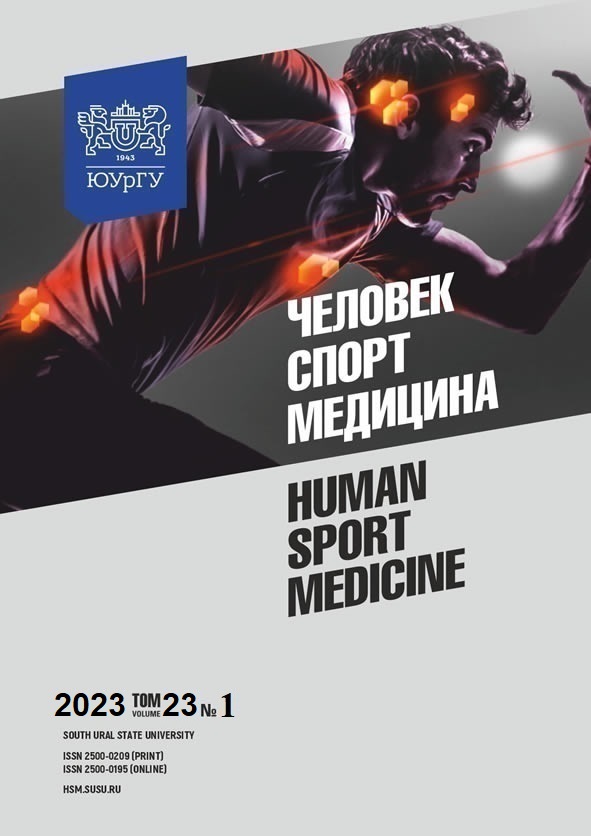WALKING SPEED AND FUNCTIONAL PROFILE OF ELDERLY PEOPLE WITH EARLY SYMPTOMS OF LOWER LIMB OSTEOARTHRITIS DURING STRENGTH ENDURANCE EXERCISE WITH BIOFEEDBACK
Abstract
Aim. The paper aims to improve the functional abilities of elderly people with early symptoms of lower limb osteoarthritis by means of strength and endurance exercise with biofeedback. Materials and methods. The study involved 42 female patients (65.78 ± 3.83 years) with early symptoms of knee and/or hip osteoarthritis. All patients were divided into the main (n = 25) and control (n = 17) groups. The body mass index, grip strength, and lower extremity functional scale (LEFS) were used at the preliminary examination. Walking speed was evaluated twice: before and after training (after 5 weeks). The training program consists of 10 sessions (biweekly) on the exercise bike with biofeedback and combines strength and endurance exercise. Results. The patients of the main and control groups had excessive body weight, reduced grip strength, difficulties with intensive physical exercise of a static and dynamic nature, and a walking speed that corresponded to the lower limit of reference values. After treatment, increased walking speed was recorded in the main group, while in the control group there were no changes. Conclusion. Strength endurance training with biofeedback improves lower limb functional performance in elderly patients with early symptoms of lower limb osteoarthritis.
References
References on translit
Copyright (c) 2023 Human. Sport. Medicine

This work is licensed under a Creative Commons Attribution-NonCommercial-NoDerivatives 4.0 International License.















